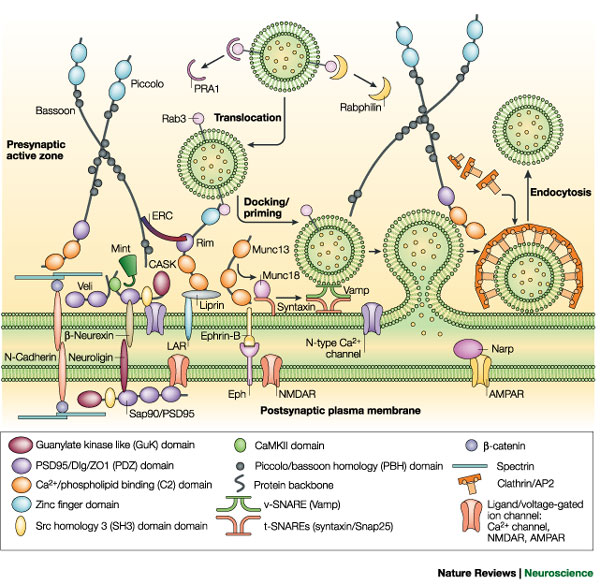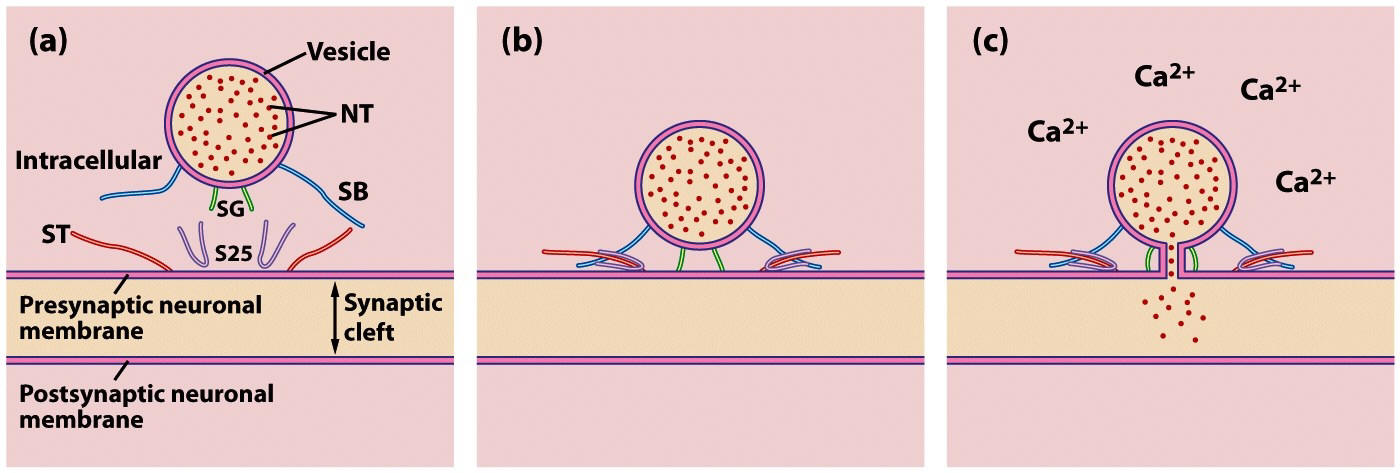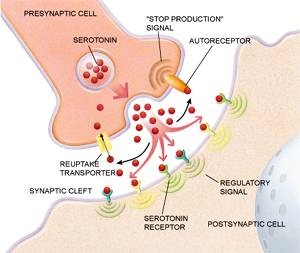Molecular structure of CNS glutamatergic synapses
From the following article:
Cellular and molecular mechanisms of presynaptic assembly
Noam E. Ziv & Craig C. Garner
Nature Reviews Neuroscience
5,
385-399
(May 2004)
doi:10.1038/nrn1370

Postsynaptically, PDZ-domain-containing proteins,
such as SAP90/PSD95 (postsynaptic density protein
95), are abundant, and they are thought to build
specialized protein complexes around specific
subclasses of ionotropic glutamate receptors (NMDAR
(N-methyl-D-aspartate),
AMPAR (![]() -amino-3-hydroxy-5-methyl-4-isoxazole
propionic acid receptor)) and metabotropic glutamate
receptors (not shown)18,
19,
20. The tyrosine kinase receptor EphB is
also tethered to the postsynaptic density, and it is
an excellent candidate for regulating the
recruitment of neurotransmitter receptors from
endosomal pools. Proteins such as NARP and ephrin-B
are thought to promote the clustering of AMPA and
NMDA receptors, respectively10.
-amino-3-hydroxy-5-methyl-4-isoxazole
propionic acid receptor)) and metabotropic glutamate
receptors (not shown)18,
19,
20. The tyrosine kinase receptor EphB is
also tethered to the postsynaptic density, and it is
an excellent candidate for regulating the
recruitment of neurotransmitter receptors from
endosomal pools. Proteins such as NARP and ephrin-B
are thought to promote the clustering of AMPA and
NMDA receptors, respectively10.

